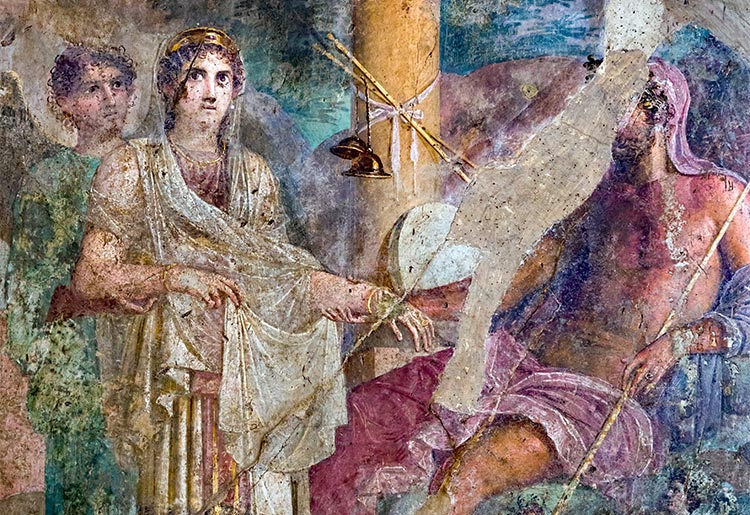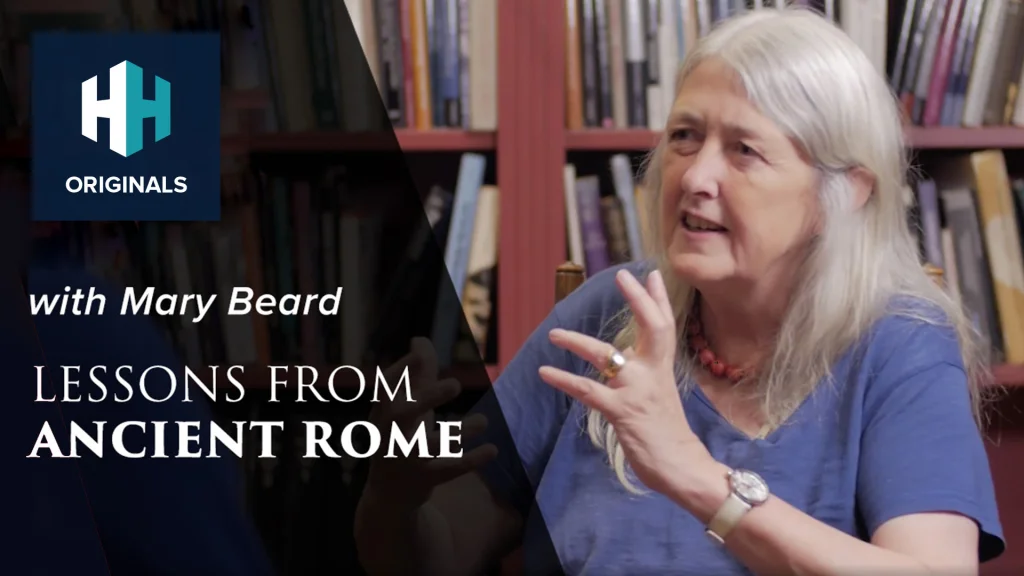[adthrive-in-post-video-player video-id=”VQm55HFa” upload-date=”2022-05-09T09:51:29.000Z” name=”The Growth of Christianity in the Roman Empire” description=”” player-type=”default” override-embed=”default”]
This educational video is a visual version of this article and presented by Artificial Intelligence (AI). Please see our AI ethics and diversity policy for more information on how we use AI and select presenters on our website.
The Rome of today is no longer the centre of a great empire. It is still globally important though, with more than one billion people looking to it as the centre of the Roman Catholic faith.
It’s not a coincidence that the capital of the Roman Empire became the centre of Roman Catholicism; Rome’s eventual adoption of Christianity, after centuries of indifference and periodic persecution, gave the new faith enormous reach.
Saint Peter was killed in Nero’s persecution of Christians following the Great Fire of 64 AD; but by 319 AD, Emperor Constantine was building the church that was to become St Peter’s Basilica over his grave.
Religion in Rome
Since its foundation, Ancient Rome was a deeply religious society and religious and political office often went hand in hand. Julius Caesar was Pontifex Maximums, the highest priest, before he was elected as Consul, the highest Republican political role.
The Romans worshipped a large collection of gods, some of them borrowed from the Ancient Greeks, and their capital was full of temples where by sacrifice, ritual and festival the favour of these deities was sought.

Wedding of Zeus and Hera on an antique fresco from Pompeii. Image credit: Public Domain, via Wikimedia Commons
Julius Caesar approached god-like status at the height of his powers and was deified after his death. His successor Augustus encouraged this practice. And although this apotheosis to divine status happened after death, the Emperor became a god to many Romans, an idea Christians were to later find highly offensive.
As Rome grew it encountered new religions, tolerating most and incorporating some into Roman life. Some, however, were singled out for persecution, usually for their ‘un-Roman’ nature. The cult of Bacchus, a Roman incarnation of the Greek god of wine, was repressed for its supposed orgies, and the Celtic Druids were all but wiped out by the Roman military, reportedly for their human sacrifices.
Jews were also persecuted, particularly after Rome’s long and bloody conquest of Judea.
Christianity in the Empire
Christianity was born in the Roman Empire. Jesus Christ was executed by Roman authorities in Jerusalem, a city in a Roman province.
His disciples set about spreading the word of this new religion with remarkable success in the crowded cities of the Empire.
Early persecutions of Christians were probably carried out at the whim of provincial governors and there was also occasional mob violence. Christians’ refusal to sacrifice to Roman gods could be seen as a cause of bad luck for a community, who might petition for official action.
The first – and most famous – great persecution was the work of Emperor Nero. Nero was already unpopular by the time of the Great Fire of Rome in 64 AD. With rumours that the Emperor himself was behind the fire circulating, Nero picked on a convenient scapegoat and many Christians were arrested and executed.

‘Triumph of Faith’ by Eugene Thirion (19th century) depicts Christian martyrs in the time of Nero. Image credit: Public Domain, via Wikimedia Commons
It wasn’t until the reign of the Emperor Decius in 250 AD that Christians were again put under Empire-wide official sanction. Decius ordered every inhabitant of the Empire to make a sacrifice in front of Roman officials. The edict may not have had specific anti-Christian intent, but many Christians did refuse to go through the ritual and were tortured and killed as a result. The law was repealed in 261 AD.
Diocletian, the head of the four-man Tetrarch, instituted similar persecutions in a series of edicts from 303 AD, calls that were enforced in the Eastern Empire with particular enthusiasm.
The ‘conversion’
The apparent ‘conversion’ to Christianity of Constantine, Diocletian’s immediate successor in the Western Empire, is seen as the great turning point for Christianity in the Empire.
Persecution had ended before Constantine’s reported miraculous vision and adoption of the cross at the Battle of Milvian Bridge in 312 AD. He did, however, issue the Edict of Milan in 313, allowing Christians and Romans of all faiths ‘liberty to follow that mode of religion which to each of them appeared best.’
Christians were allowed to take part in Roman civic life and Constantine’s new eastern capital, Constantinople, contained Christian churches alongside pagan temples.

Constantine’s vision and the Battle of the Milvian Bridge in a 9th-century Byzantine manuscript. Image credit: Public Domain, via Wikimedia Commons
The extent of Constantine’s conversion is still not clear. He gave money and land to the Christians and founded churches himself, but also patronised other religions. He wrote to Christians to tell them that he owed his success to their faith, but he remained Pontifex Maximus until his death. His deathbed baptism by Pope Sylvester is only recorded by Christian writers long after the event.
After Constantine, Emperors either tolerated or embraced Christianity, which continued to grow in popularity, until in 380 AD Emperor Theodosius I made it the official state religion of the Roman Empire.
Theodosius’ Edict of Thessalonica was designed as the final word on controversies within the early church. He – along with his joint rulers Gratian, and Valentinian II – set in stone the idea of an equal Holy Trinity of Father, Son and Holy Spirit. Those ‘foolish madmen’ who did not accept this new orthodoxy – as many Christians didn’t – were to be punished as the Emperor saw fit.
The old pagan religions were now suppressed and sometimes persecuted.
Rome was in decline, but becoming part of its fabric was still a massive boost for this growing religion, now called the Catholic Church. Many of the Barbarians who are credited with ending the Empire in fact wanted nothing more than to be Roman, which increasingly came to mean converting to Christianity.
While the Emperors of Rome would have their day, some of the Empire’s strengths were to survive in a church led by the Bishop of Rome.
 Watch Now
Watch Now












